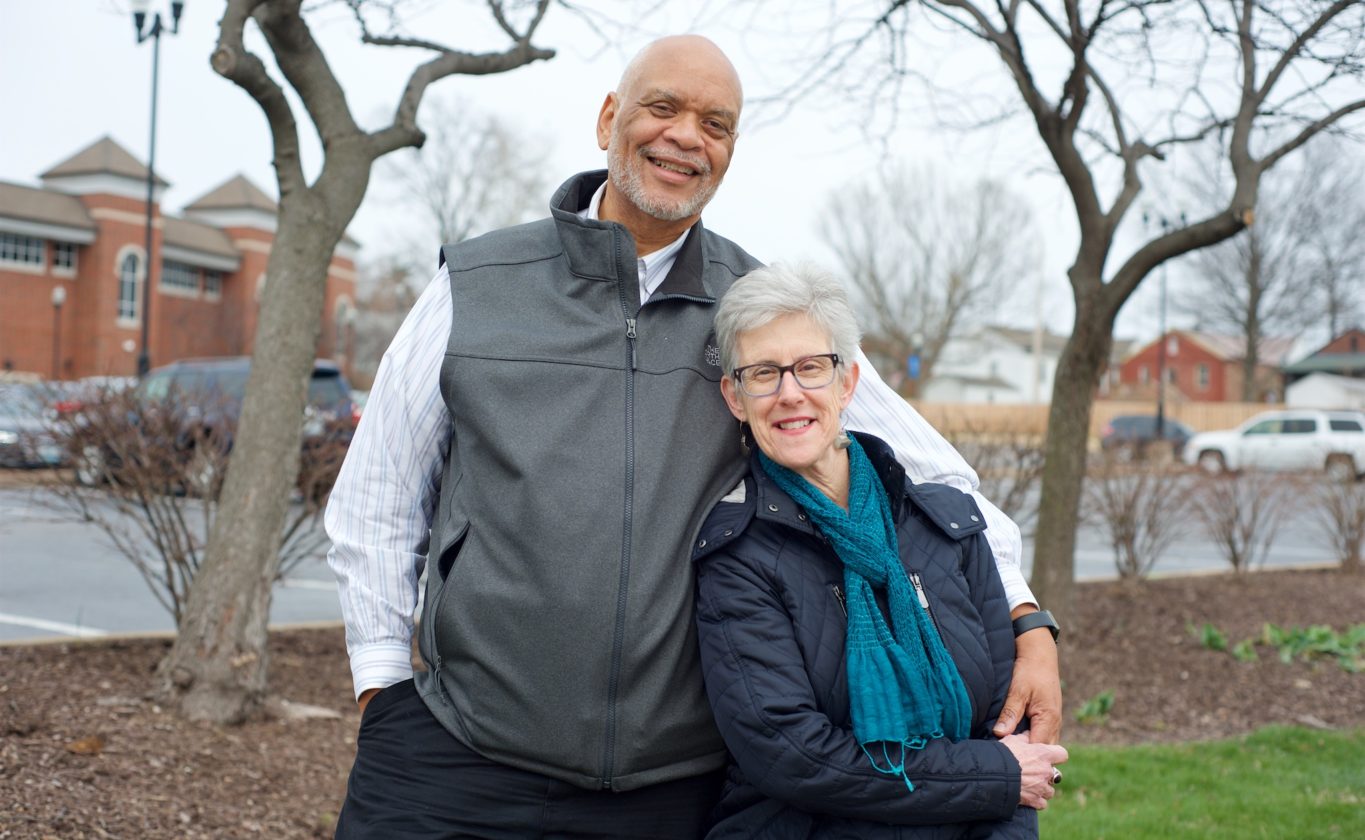This is part of the #STL2039 Action Plan storytelling series in partnership with Humans of St. Louis.
Mary Ferguson: I’ve been doing this work, which made me focus on Whiteness and the role of Whiteness, for over 40 years. And I’ve worked for almost every one of the racial justice or social justice organizations in town: NCCJ, ADL, Diversity Awareness Partnership, and Focus St. Louis. I’ve been in university settings as a diversity officer attached to the president’s office and I’ve been in a university setting in HR in diversity and inclusion – very different experiences. I’ve done consulting work around this largely based in neighborhood community-based organizations or school districts. I’ve done a lot of work in education because my background is as an educator. And I work half-time for the YWCA as their racial justice director. Are you familiar with the Witnessing Whiteness program? I administer that along with a couple other things there.
My dissertation research was thinking about White people as social justice educators in school systems and what were the barriers to being effective. Mostly, I noticed that we struggle.
Since about 83 percent of teachers are White and mostly women, part of my research, and especially work with educators, was to highlight the role of Whiteness in educational equity and to quit stating the problem as, “The problem is children of color.” The problem is that we as White women don’t have the knowledge base we need to be able to do something that meets those students where they are and takes them where they need to go. And my dissertation research was thinking about White people as social justice educators in school systems and what were the barriers to being effective. Mostly, I noticed that we struggle. As part of the title of my dissertation in 2009, I took a Sweet Honey in the Rock song that came to me in a dream when I was napping. I woke up and was like, “That’s it! Give Your Hands to Struggle,” because even with a lot of sustained work, there is a point where it’s not clear. It’s not easily pursued. And in that point of confusion, struggle, and inability to envision, we can either churn in there or we can give up and go back.
So I had already worked a long time in St. Louis Public schools, and for the University City School District, and I had taught teachers at the College of Education at the University of Missouri. And that last one was one place where I feel like I really did make a difference. They first hired me as a consultant because they were going to have an accreditation review. The accrediting body had a very strong diversity standard, and they were afraid they weren’t going to pass. So they said, “Help us figure out what to do.” And one of the things was to have more of a social justice emphasis in their teacher preparation.
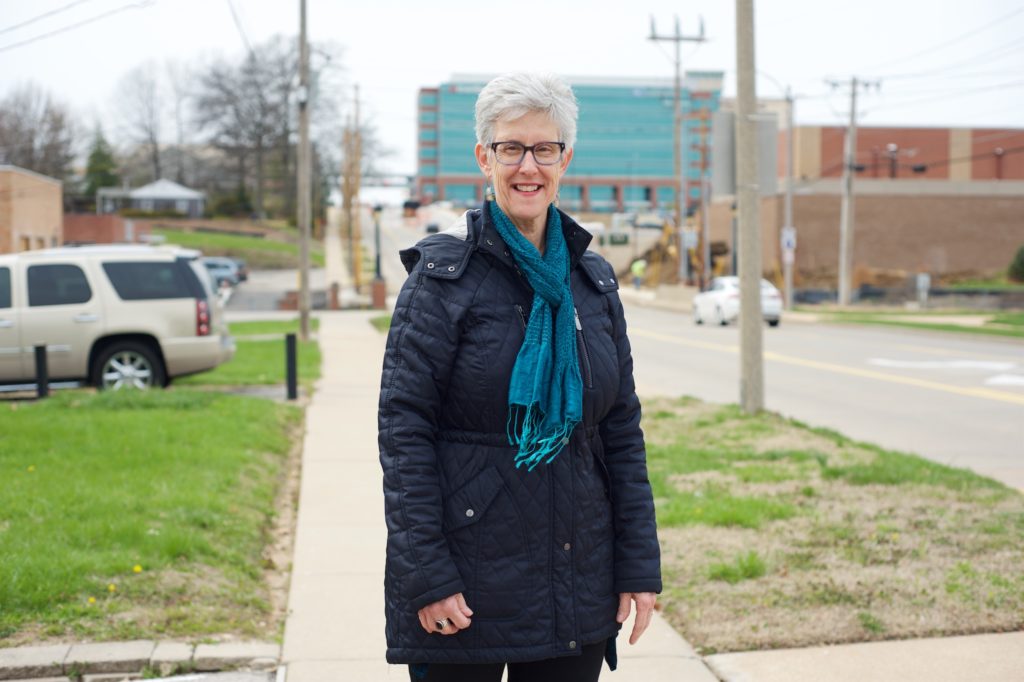
Mary Ferguson. (Photostory by Lindy Drew/Humans of St. Louis.)
They didn’t incorporate it into the undergrad or pre-service teachers program, but they did incorporate it into their graduate program. So I not only helped develop that, but I was one of four people hired to teach the first course. I said to my students when we finished after 16 weeks, “I always knew I was going to get a Ph.D. I just was never sure exactly what I was going to get it in. Now I’m convinced that this is it.” And I told them, “You made me want to do this because you made me want to figure out what else can we do.” By 2006, I was in my coursework and that course that was developed stayed a part of the graduate curriculum.
I developed a second course from there and a summer course called Understanding and Teaching About White Privilege. It was an intensive 40 hours in one week course and it was life-changing for me as an instructor and for the students. It created such a learning community of folks who wanted to stay connected because our ultimate work is about relationships. That’s why it’s so important for me to work with Rudy. I don’t ever want to do anything alone. I always tell people, “I’m a middle child, so one of my most salient identities is that I’m basically asking myself in my head all the time, ’Who can I play with?’” And I don’t want to do it alone. I need the support and feedback and challenge when somebody says, “Really? That’s what you think about that?” So having a community is important to me, and my community shifts sometimes.
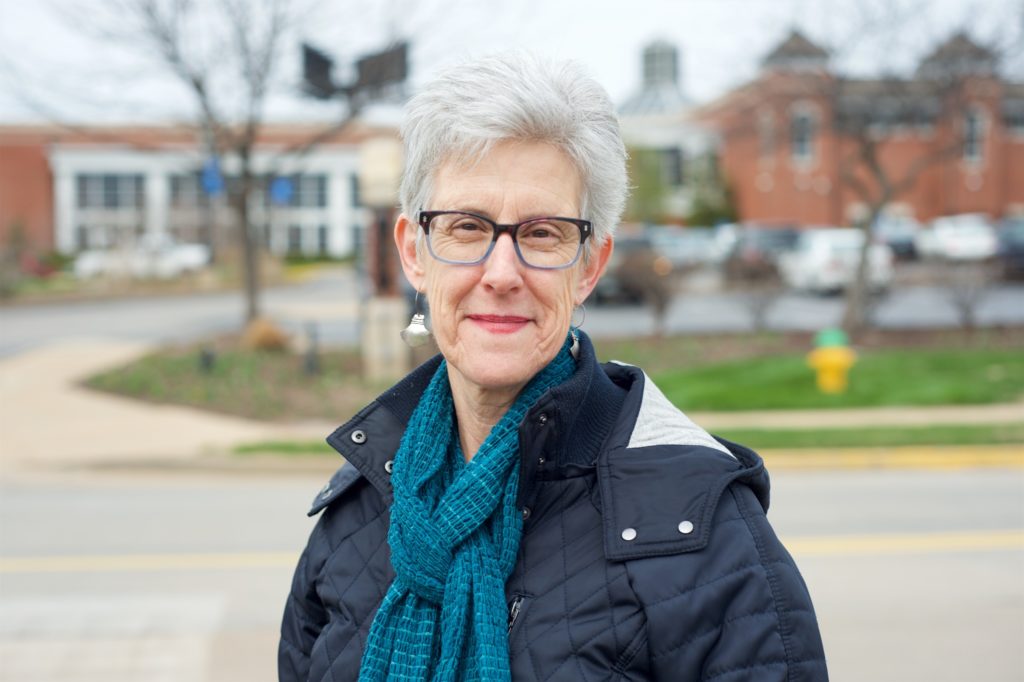
Now I’m doing much more community-based work through the YWCA because our Witnessing Whiteness groups are in churches and synagogues and neighborhood groups and schools and workplaces. I’m always going into a different environment, and we work really hard to build community within each group. When I visit a group, I say, “Did you know there are 15 other groups of people sitting around like this, one night a week, doing the same thing you’re doing, trying to figure this out? And that we’ve had about 3,000 people since 2011 who have gone through this? I want you to know that your interest in this is magnified and multiplied when you think about all those folks and how that can maybe give you a little more courage, a little more motivation, a sense of – maybe you’re not feeling really powerful, but when you think about 3,000 people – well, you’re not doing it alone.” Because that’s the crushing thing about oppression. It makes you feel small and alone. Someone might think, “Who am I to do this?” So I spend a lot of time convincing people that they’re exactly the right people to do this.” And it’s not going to change unless we actively do something.
I was just reading an essay for some work I’m doing with a group of teachers next week. It’s not an ideal situation. It’s 45 minutes before school starts, which is not a lot of time. But I always look at it as an opportunity. Maybe one person doesn’t jump up and say, “I got it!” But you see that look on their face like, “Ohh!” And I also know that even if I don’t see it, it’s a seed. So I can’t say that six months down the line they’ll read something, they’ll hear something, and they’ll know it resonates, it’s an echo, and they may or may not remember where they got it from, but they’ll know that it’s there, that they’ve internalized this realization that, “Yes, I need to pay attention. Yes, something’s going on. Yes, this is important. Yes, I should stay focused on this.” Because as White people it’s easy not to focus on it. I value that a lot and I value all the people of color who have been patient and kind and generous and forgiving as I keep doing this work imperfectly because there is no perfect way to do it.
“Yes, I need to pay attention. Yes, something’s going on. Yes, this is important. Yes, I should stay focused on this.” Because as White people it’s easy not to focus on it.
I think one of the things people see in me is consistency. I don’t give up and that I haven’t given up. Since 1976, no matter what my job title has been and where I’ve worked, this has been my work. Racial justice has been a big part of how I came to think about what I was doing. So I worked in youth development for a while within St. Louis City, so mostly with children of color. Again, it was thinking about my own identity and what that means and what my background is. I love it when I work with White people now and I hear, “Oh, the problem is all those people who live in South County.” I’m like, “I grew up in South County.” I get a lot of, “Your parents must’ve been university professors.” “Nope. They were working-class people. Bought their first house in South County. Bought their second house and moved up to West County.” So making those kinds of generalizations that the people who don’t get it are the people who are the ones holding us back.

When I worked at Focus St. Louis, one of the projects I was responsible for was Bridges Across Racial Polarization. That was the dialogue group process that had been going on for quite a while. Then, it seemed like the problem to everyone was St. Charles. I was like, “Okay, if you think that’s the problem, then I’ll get a Bridges group started there because I don’t think it is the problem. I think anywhere we think we can’t work, we can work. We just have to get in there and build some relationships.” And we did. We had a Hazelwood group. We had a St. Charles group. And I described the program as like the Central Corridor to the max. It went from the Central West End, University City, Olivette, Creve Coeur, Chesterfield, and straight down the middle. We had nothing north, nothing south. So I was like, “That’s great! And, there’s more.”
When we collect intake information for Witnessing Whiteness, I don’t expect to see a lot of North County or North City zip codes. But I am amazed at the St. Louis City and St. Louis County split. We’re probably a little heavier in the county than we are in the city. I literally have to report how many participants live in 63109, 63111, or 63116, and we’re covering quite a bit of territory that way. And I’m seeing quite a bit of spread, not just concentrated in one place or another. So the motivation and interest are widespread.
The author of the Witnessing Whiteness book lives in LA. And Amy Hunter, who was my predecessor – a very good friend and a longtime colleague – picked the book because it had online resources. The author came to St. Louis in 2016, and she explained to me that she wanted to have the online resources, she sort of had workshop material, and the Tulsa, Oklahoma YWCA had conducted the workshops and used the book together. When Amy started the program, a lot of people were using the workshop material. I do not think the book is best understood by doing a lot of activities. It really needs to be about discussions, self-examination, journaling, listening pairs, talking, and thinking. So now we are the only YWCA, that I’m aware of, that does it to the degree that we do. And the author, Shelly Tochluck, said she’s not aware of anybody else doing what we’re doing.
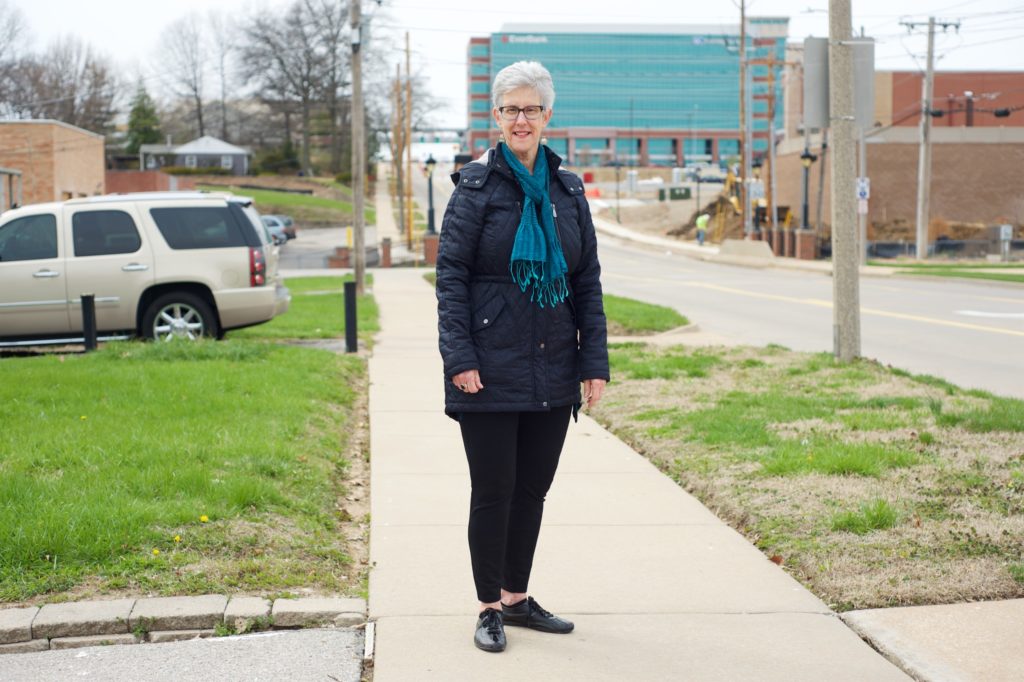
I spent most of last year writing a facilitator’s manual. All of our facilitators are volunteers and they’re all people who have gone through the program once. They could be baby steps ahead of somebody that they’re going to lead. I think the idea of online workshop material felt comfortable because most workshop material is kind of scripted. And I was like, “Well, to be a really good facilitator, you don’t follow the script, you follow the group.” So you have to know your material, but you also have to know some things about group dynamics. You have to know some things about racial identity process, which is what people are going through, their racial identity development. And then you have to be really comfortable and aware of yourself talking about this stuff while watching all the dynamics in the room. So that’s a lot.
It’s a balancing act, but I visit every one of the groups, and sometimes I just sit there in awe. We have teams of three facilitators. They take turns and I have seen them do an amazing job. Some of the experienced facilitators, of course, have learned so much through doing it again. If you’re leading it, you have to stay accountable. So that’s another aspect of this program that I think has been really smart is that you’ve got some built-in individualized professional development that’s self-directed, because I can’t keep up with 48 facilitators doing 16 groups right now, but I try to offer resources. Like, we read the book White Trash together to look at class and race and where that intersects, particularly for White people.
It’s not lack of information that’s kept us from this work. It’s lack of will.
New books are always coming out and people get excited. So many people have read The Color of Law and they’re excited to talk about that aspect of racially tinged policy put forth by the federal government that created economic circumstances that fit right within the whole system of White supremacy because it built up White people’s wealth and suppressed the wealth of people of color.
So even if people started learning in a very narrow sense, some things about race and its impact, they just keep looking for more ways to find information. It’s a very rewarding process to see this continuous hunger for more information and excitement. Sometimes I’m like, “Okay, okay! Enough, enough.” And they’re like, “Well, have you ever read this book? Have you heard this speaker? There’s a new podcast.” There’s a wealth of information. And that’s the other thing. It’s noticing that it’s not a lack of information that’s kept us from this work. It’s a lack of will. We have to admit that and constantly use each other as the support to understand that this does depend upon us getting up and doing something.
Does it feel like a revitalization of the work?
Mary: A little bit. See, I was here through the NCCJ Dismantling Racism heyday, which was about 10 years, from 1995 to about 2005. Every year, there was a week-long anti-racism workshop called Dismantling Racism and that was very transformative. Rudy was very involved with St. Louis 2004. He was in charge of their racial justice work. And it felt like we were really close to making some things move. Then I left in 2009 and came back in 2014. So I’m not as clear about what happened in that timeframe. But when I came back, I felt like we had lost whatever momentum was going. I don’t know if it was the economy collapsing. Maybe some of it was reaction and resistance if there was forward movement. But I am not convinced that things are going to grow in a moment, or that there is a moment that makes the change. I think there are moments that grab the attention of some people whose attention hasn’t been focused here previously. I’m trying to wrap my head around thinking about something that’s so sustained and so historic and so long-running, and I think we have these high points and low points, but I can’t think of this cataclysmic shift.

Mindy Fullilove – I love her last name – is a professor at The New School in New York and I heard her speak. She said the framework that they’re adopting in their intellectual circle with people thinking about White supremacy and racism is that 2019 is the 400th anniversary of the founding of Jamestown, and 400 years of oppression is enough. I think about last year being the 50th anniversary of the King assassination. I’ve had many recollections about that day, being a White high school freshman in an all-White community. I remember we had an orchestra concert that night, so when the assassination happened, I didn’t hear about it. But when I got home I heard about it, and I noticed that White people didn’t really have a reaction. In the coverage during the anniversary week, I heard of people saying, ‘Yes, I remember White people cheered. I remember White people cried.’ I just remember no reaction. Like, it wasn’t our business; it wasn’t our person. And in doing racial justice work, I remember recalling that moment in 1968 like I knew it was something. But I also knew it was strange that everybody around me looked like they didn’t know it was something. Was it a moment or not? Because we’re 50 years later and look at all that’s happened.
I want to do this work as long as I can, but I feel closer to not having as much time. I know my sense of urgency gets elevated. I had a meeting recently with my facilitators, I felt exasperated, and that I was expressing that in a “do this, don’t do that” kind of way. I checked with a couple of people at the end and they said, “We don’t think you came across that way.” But I felt that I did. For me, it was real. And at the end I chose to say – because I think transparency’s always the better way to go – “I hope I didn’t sound exasperated. I believe that comes from my feeling of a sense of urgency about this work and a sense of valuing what you’re doing as the facilitators. I know how transformative this process can be. I know also in our time frame of where our groups are now, we’re closer to the end than we are to the beginning with this round. So if I sounded like, ’Please just do these things,’ it’s because we only have folks for another two or three times.”
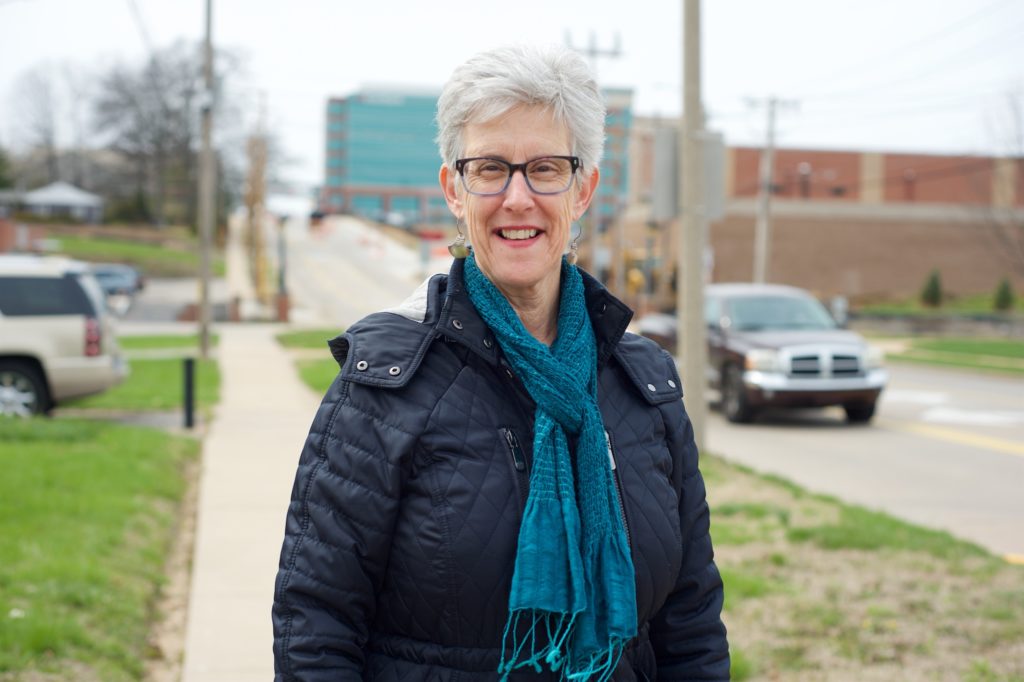
They’re relying on me for what my experience has been, for what my beliefs are about how people learn. And I tell them, “This is what I studied. I have a Ph.D. in teaching and learning, so I pay attention to how this happens. I love designing curriculum, to think about how we get to these outcomes, and to do it in a way that uses the process as the model. So, yes, I could give you 20 things to read, but I’d rather we sit, discuss, and have the dialogue because our relationship and what you think and me being able to listen to you is part of the process.” We’re always saying to the participant, “Trust the process.” So I got very transparent with them and said, “I think it’s a reflection of where I am in life, my age, how much time and energy I have left for this work, and that I see this process that we’re always going through with groups in cycles. They only have so much time.” I like to have fun. I like to play. But with all my people who do Witnessing Whiteness, they’ll just say, “It’s your Whiteness.”
I want to make good use of my time and I want to show people how it’s your daily practice. It’s not something you read, or somewhere you go, or a conference you attend. It’s your daily practice of how you think about yourself and how you think about other people, and how you think about the world. It just takes slowing down and making it important. I’m influenced by what I read and what I listen to. We talk about financial literacy, media literacy, and technology literacy. Why? Because those are big systems that are hard to understand, we have to make important decisions in them, and we don’t know everything that’s involved. Race operates the same way. So why don’t we try to get racially literate? We have to get fluency in the language. We have to learn that behavior. We have to learn the interactions. How do I interact with other White people? How do I interact across race and get out of the Black and White paradigm that is so St. Louis?
It’s not something you read, or somewhere you go, or a conference you attend. It’s your daily practice of how you think about yourself and how you think about other people, and how you think about the world.
I was never encouraged to dream big, so I sometimes feel like being female and being raised working-class are what are holding me back from thinking about where anti-racism work should go. But I know some things. And I think I’ve seen this well illustrated in the Witnessing Whiteness program. The thing that I always bristled against in education is people putting a lot on teachers saying, “Well, you’re responsible for the kids. So we’ve got to get you right so you can get the kids right.” There is no appropriate age, because we have a lot of people whose ages are from 65 to 74, and 75 to 84, and 85 plus. You’d be surprised the number of people who have gone through Witnessing Whiteness who are in those age groups.
It’s awesome because you’ve got a lot of really deeply ingrained things if you live long enough. And to think, “Okay, maybe I should shift some of those. Maybe I don’t even know what those are.” So I do not subscribe to, “It’s all upon the children.” And I don’t think that children are any better off than we are. This stuff is so pervasive and so well functioning. They can prove babies at six or nine months can discriminate based on color. So I’m really encouraged to see people embracing this at an older age and not thinking, “I didn’t get it by the time I was 15, so there’s no hope for me.”
It’s okay to know and understand history, but we shouldn’t get stuck in it, and we get a little stuck in the past. We want to retell it and that keeps us from having as much attention to look for the really innovative solutions. And then innovative solution people get discouraged when they show up and people want to tell you all the reasons something won’t work or what’s been tried instead of saying, “Maybe the time is right this time. And maybe the right people are at the table.” So, that imagination part, for me, is big.
Oh, Rudy just texted that he’s here.
Hi, Rudy. We’re talking about what a racially equitable St. Louis would look like because we’ve never had that before. We just left off with the urgency of getting this work done. And how do we move forward when St. Louis can be so stuck in the status quo?
Rudy Nickens: Well, I worked with the Ferguson Commission for a year when the Missouri Department of Transportation loaned me to the commission because I am a government employee and it was a gubernatorial commission. My job was to help the commissioners to process and understand what Racial Equity would look like if that was the lens they were going to use for the report. They had to know what they were talking about. So I’m more than mildly curious about where we stand and the status of Forward Through Ferguson moving forward.

Rudy Nickens and Mary Ferguson. (Photostory by Lindy Drew/Humans of St. Louis.)
My first collaboration with Mary started around the National Conference for Community and Justice Dismantling Racism Institute. We were friends before, but that was the first time we did something together. At the time, my job was as a restaurateur. I owned and operated a restaurant in the Central West End for about 25 years, from 1974 to 1998. One of my personal points of pride was having an institution that provided a place and resources for all kinds of community activity because it had food, it had space, and it had people. Almost no progressive political candidate or social organization didn’t have us as part of its fundraising or meeting space. The Sunshine Inn was that place.
Mary: It WAS that place!
Rudy: It had great food, but what was even more proud for me was that it was the de facto community center for many, many, many causes. Arts organizations were birthed there. Political candidates launched their careers from there. We had meetings from 6:00 a.m. to midnight, like, “Hey, can we have a breakfast fundraiser before you open? Can we have an after hours?” It was that kind of place. You could always count on it being a place to get a good meal, but also to interrupt loneliness, to find progressive community, to have partnerships formed, even to screen your dates at! It also where the Dismantling Racism Institute folk gathered to think and plan and strategize and learn. But the world changed, and the time changed. Anyway, at the time, I was in that role and it was really awesome. And I’m proud that that was one of the things we did together.
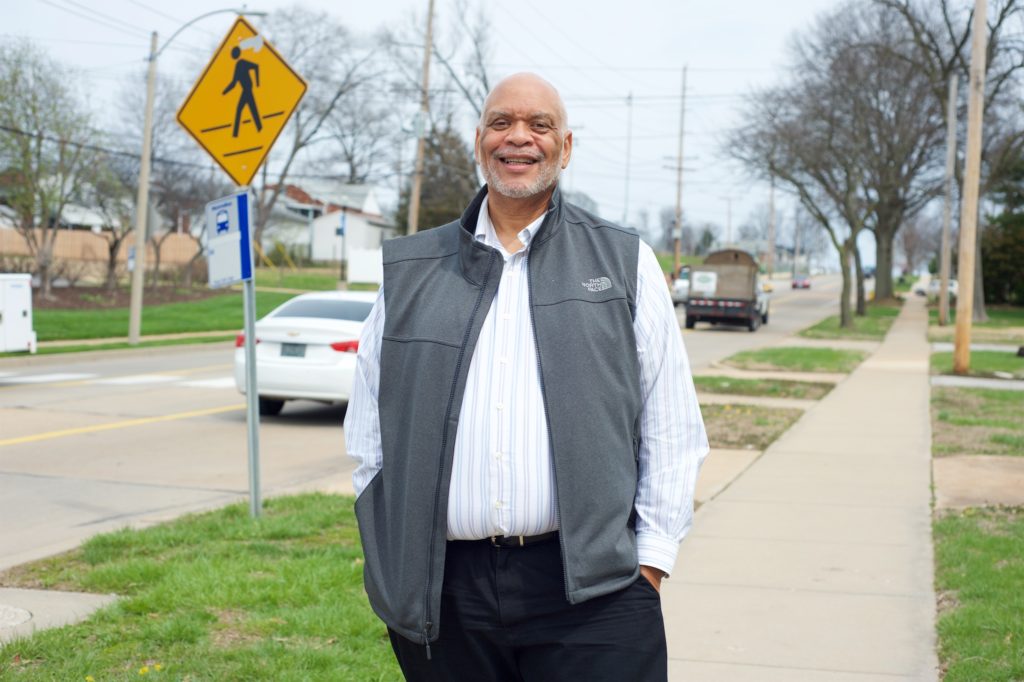
My major contribution to that project was introducing two things. Intersectionality, because it hadn’t really gotten beyond race and gender and White and Black when it started. So expanding the conversation around what diversity inclusion means and developing a model to look at intersectionality better. And then my personal particular favorite piece of work that I did was to bring the conversation of internalized oppression into the room and give people of color a chance to work on healing the hurts of racism and people targeted by it.
Mary and I and a third mutual best friend, who’s no longer alive, and we did for-profit consulting work together under a company called A to Z. It stood for Aliah and Zillah.
Mary: And Rudy was the “to.”
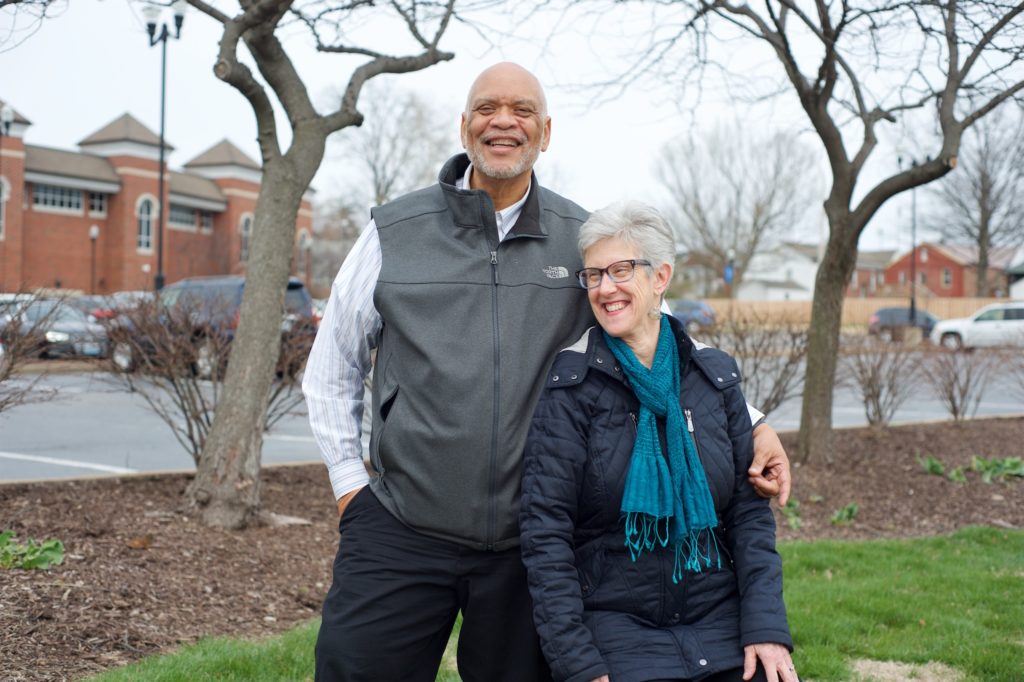
Rudy: Right! Mary’s other name is Zillah and our partner was Aliah. So I think of all the projects that we did together, and one of the more important ones we did was with the Board of Alderman.
Mary: Oh, I didn’t think about that. Caring Communities always comes up for me. Board of Alderman. And all your St. Louis 2004 work.
Rudy: Yeah, St. Louis 2004 was an organization that was created to be a catalyst for some community development change. Actually, Forward Through Ferguson benefited from having a lot of the 2004 experience as a go forth around community engagement. How do you get lots of folks to come and tell you what they need and want? How do you listen? How do you create? How do you focus on an agenda despite competing thoughts around you? How do you say these are our signature priorities and dedicate the resources you need to them? So my job with the organization was to lead the diversity initiatives within this 2004 workforce diversity and Zero Tolerance for Hate. There were people that focused on parks and trails. There were people that focused on economic development. There were people that focused on celebration. And there where people focused on education, housing, and neighborhood stabilization. My job was anything that had to do with people living together in community.
There were hardly any private sector corporations that had a diversity initiative in them at all and we built an infrastructure for that to happen.
I was on staff, but Mary and our other partner, Aliah, were the team for doing those projects. And the one that we took on biggest was in 1998 when we started. There were hardly any private sector corporations that had a diversity initiative in them at all and we built an infrastructure for that to happen. We built networks of people called the Diversity Officer Networks, and every sector – public, private, nonprofit – and every major employing institution in this region got to learn. Their CEO’s got to be trained. Mostly, it was HR at the time, but now hardly anybody doesn’t have a diversity office because of that. So the climate around business diversity shifted upward because of the work that we did there big time.
Mary: Now you’d be embarrassed to not have a diversity, inclusion, and equity office.
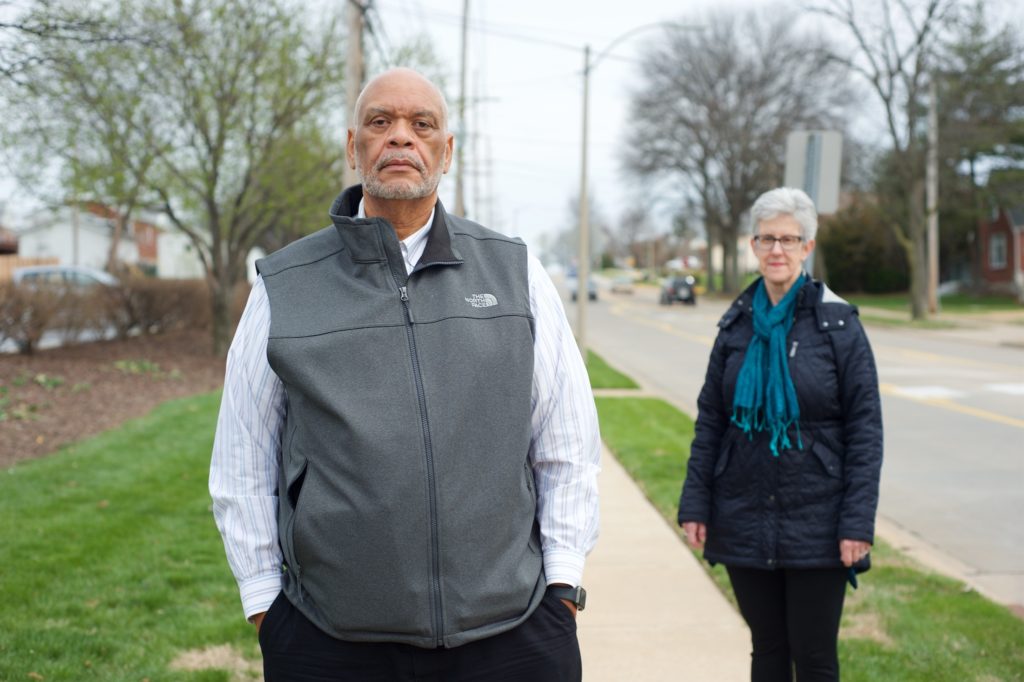
Rudy: You just didn’t have to do it before. And now you find a large employer that doesn’t have that as a strategy? I mean, some of it is obviously shareholder value or retention costs increase, turnover is expensive, or you can build a business case. But more important than just looking at your own business, and how you get more profitable or whatever, we wanted to set a climate that you wouldn’t not do this in your organization. We didn’t just focus on the numbers, which is what most diversity initiatives focused on, like,“We’ve got this many women and this many people of color.” We didn’t let them do that. We looked at climate and culture, and how you ran your business and structure. I am proud of that and some very major successes in the community because of it. And some businesses don’t even know that it started there, which is interesting because it’s the next generation. It’s 20 years later. So there are folks who are in major leadership positions around diversity who have no idea that in 1998 we brought their boss into the room to make them take this on.
There are folks who are in major leadership positions around diversity who have no idea that in 1998 we brought their boss into the room to make them take this on.
My boss was Jack Danforth, and we used Jack’s clout in the community that sits in front of Andy Taylor, and Craig Schnuck, and Augie Busch, and all these folks to say, “Get to this. We’ll do it well.” We used him to go to civic progress meetings and say, “Come on. This is important. Get the buy-in.” We worked him. We worked him hard, but thoughtfully.
But, the thing I started saying is, we did a model of the Dismantling Racism Institute that we tailored for the St. Louis Board of Aldermen, which was really hard to do. We had a person, who’s no longer alive, but he was leading the Aldermanic Black Caucus. And then we had, at the time, the president of the Board of Alderman, Francis Slay, before he was mayor. And these two guys came to us and confessed about the racial animus and strife that existed within the board. My direct supervisor who was president had worked for a couple of different mayors and had relationships with all those elected. And he said, “I went through this Dismantling Racism Institute, and I think you should get the board to go through it.” So we got the Danforth Foundation to pay for the summit because you can’t use public dollars for stuff like that. We took them away for three and a half days. And we got them to talk to each other in ways they had never talked before. We need to do this every year, however. It’s a whole new class of folk.
Mary: You take what you can get. I always thought we were going to blow it the first one when Aliah and I facilitated for the Board of Education because there was a lot going on in St. Louis Public Schools. I was like, “Oh no! This is it.” And then the Board of Alderman was another one.
Rudy: It’s high stakes.
Mary: Very high stakes. Like, with The Post-Dispatch leadership summit with the CEOs.
When’s the first time that you heard the phrase “Racial Equity?”
Rudy: The first place I started hearing about Racial Equity was in the social philanthropy world. I’m on the board of a couple of foundations, and for a long time foundations had been thinking about cultural and Racial Equity and giving, in particular. So it’s not that old in my head. Certainly in the last decade.
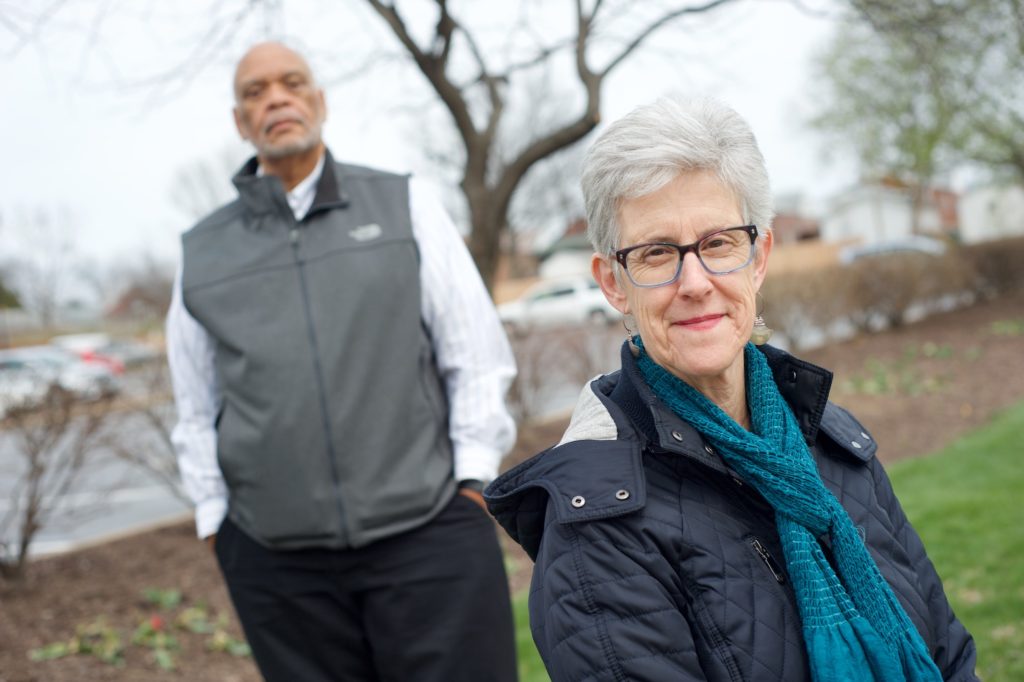
Mary: There’s a higher ed conference called the National Conference on Race and Ethnicity that usually brings in top people. But I feel like I also heard about it maybe in a governmental kind of way. I remember coming back from some conference in Portland or Seattle and doing an environmental impact statement in which you proposed something. And we had to do a racial impact statement. I was like, “Whoa. This is different.” And it was all around Racial Equity, like what are the differential outcomes of this policy or procedure that’s been proposed for legislation? That’s when I first heard of Racial Equity. But part of how I like to learn is to go someplace. That’s one thing not everybody in St. Louis does, but that’s where we’ve both gotten a lot is from other communities. We belong to national or international communities that are committed to this, so we hear perspectives that are outside of the St. Louis perspective. And that’s really helpful because then we try to bring that perspective back here.
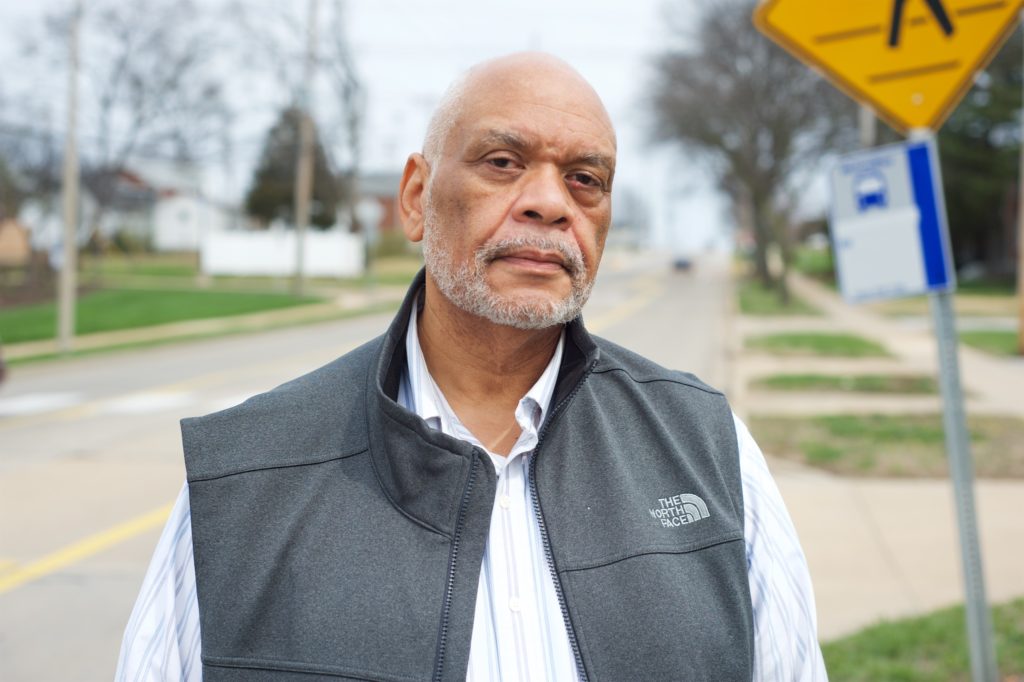
What does a racially equitable St. Louis Look like to you in 2039?
Rudy: We’ve got this beautiful national model right now of how to think about people. It’s in response to the opioid crisis. The response is really good. We’re putting together mental health resources, medical resources, educational resources, courts, and police. It’s great. Like, this is really thoughtful. And it’s thoughtful because White kids are dying. That’s the only reason why we have said, “Oh my God, this is horrible.” The impacted people are really worth saving, and the intervention doesn’t need to be “lock ’em up” like it was the last crisis that we had around the drug crisis, which was identical only that Black kids were dying. When it was crack, it was, “Lock ’em up, treat ’em bad, throw away the key.” Now it’s like, “Let’s save them, let’s help them, we love them, they’re important, they’re our people.” That kind of grace, that kind of memory, and that kind of extension is needed for all people to be able to bring the kind of resources needed to solve a problem because human beings solve problems when we take them on. If we could identify the problem that way across races, that would be a wonderful vision to have for me. That’s one of the ones that I hold on to these days.
Mary: The Surgeon General just issued a warning that everyone should carry the opioid antidote. So everyone should have anti-racism training.
Rudy: And police departments should carry it.
Mary: We had a similar question in the last practitioner’s roundtable for Forward Through Ferguson, and I wrote that your geographic or demographic identity would have no predictive ability. It would mean nothing about your life chances or your life experiences. Every neighborhood and every school would be a beautiful, lively, supportive environment for people. You’d be around people you love to be around doing things you love to do in spaces that you create together to make you all connect and get your tasks done. That would be something that would be totally the opposite of what we see now.
Why is it important to have so many groups that are doing this work?
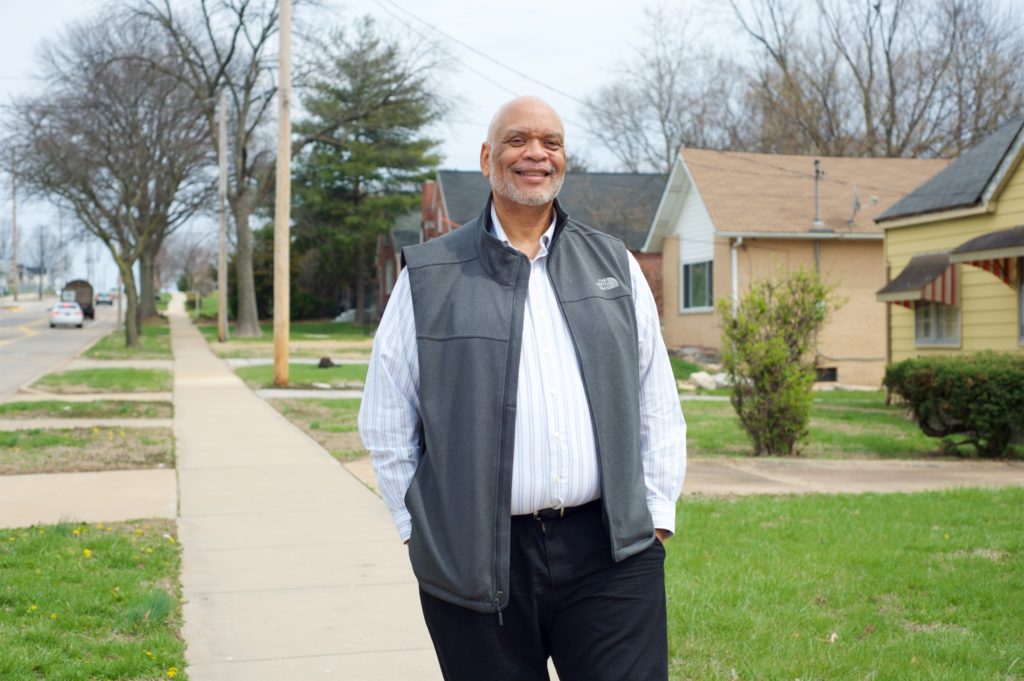
Rudy: One of the things that we decided during the NCCJ days that is still meaningful to me is that we want to get all these people trained in this material and taking ownership of it. Everybody has a different sphere of influence from a kindergarten classroom to a civic board. Why would you not want to make sure as many people as possible could be on board with this work? Wouldn’t it be great if no decision is made in this community that affects the outcomes of people’s lives where someone wasn’t in the room who has this lens? That’d be really cool if you want to get as many people trained and taking ownership of it. It’s not the work of an organization. With my job at MoDOT, I don’t want people to lean on the diversity department to be the only people owning the diversity outcomes. My job is to be a consultant to everybody in the organization, but not to be the problem solver for everything or to be the only one who speaks up about it. If equity and inclusion is a corporate value, then everybody’s got to find their authority, and their voice, and live it. The question is how do you get everybody to make it their responsibility? And you’ve got to get smart about it. You’ve got to learn stuff and you’ve got to heal stuff.
Mary: If we knew what the one approach that worked was, we’d all be doing it. We don’t know. So we’re all trying different things, trying to figure it out, and using the skills and talents of the people we have around and we need to see what works.
Rudy Nickens
Director of Equal Opportunity and Diversity, Missouri Department of Transportation in Jefferson City
Mary Ferguson
Racial Justice Consultant, YWCA of St. Louis

